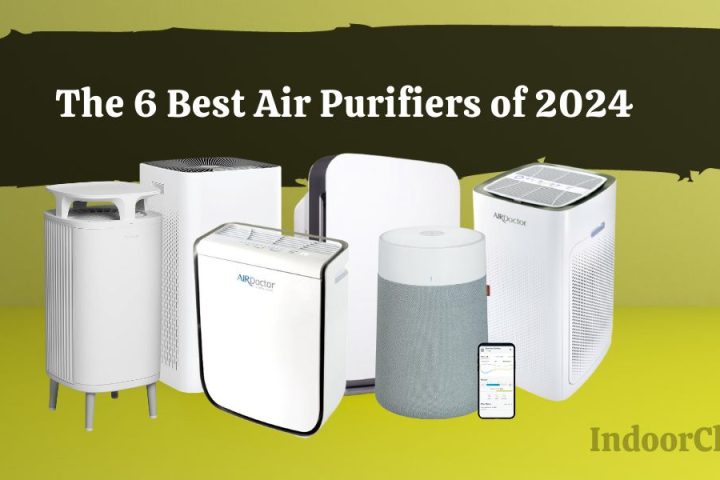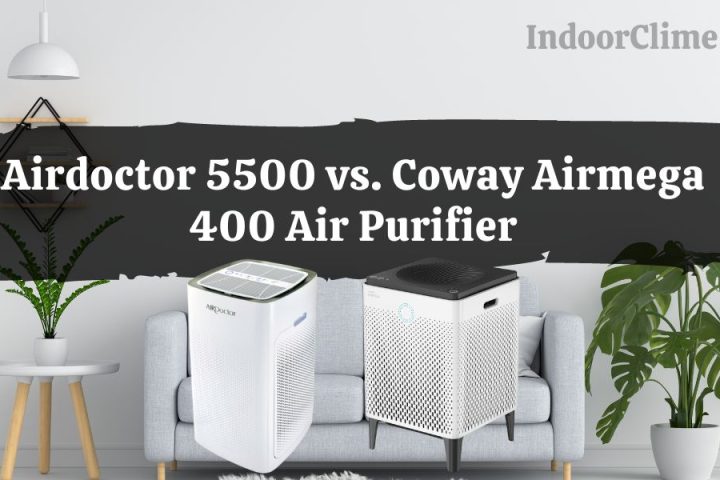The air we breathe is polluted. The WHO data shows that almost all of the global population (99%) lives in countries with high pollution levels, leading to serious health problems like heart disease or cancer.
Having clean air is crucial for those living in vulnerable conditions in low and middle-income countries. People living near busy streets or highways are more exposed to polluted air, increasing their chances of getting asthma, pulmonary disease, and respiratory problems.
An air purifier could immensely filter microparticles causing severe illnesses like asthma, allergies, and respiratory infections for people living in poor air quality areas.
Keep your air purifier choice simple by placing one where it’s needed most. Go for air purifiers fit for the room size, foot traffic, or places where extended periods of stay are expected (e.g., bedrooms, living rooms, kitchen).
Choosing an appropriate air purifier is essential in achieving quality and cleaner air.
Factors To Consider Whether You Need An Air Purifier In Every Room
Before purchasing just any air purifier, several factors to look into. Identifying these will help you find an appropriate one for your home or office needs.
Room Size
The size of your home will determine how many rooms need an air purifier. A larger estate may require one room, while smaller apartments can get by with one or two units.
Your air cleaner’s efficiency will depend on its filter capacity in a given space. Following the industry standard, the CADR (Clean Air Delivery Rate) is an excellent way to check your air purifier’s capacity.
The CADR ratings for air purifiers are a great way to know the units have been tested in an accredited lab and meet industry standards. It is best used to determine room capacities for air cleaner units with larger fans performing at high speeds. Although there’s no definite measure to determine whether certain pollutants are removed, CADR is the closest measurement of decreased particles in the surrounding air.
Room Usage

How much time do you spend in each room of your house? With so many rooms, it’s hard to keep track. The average person spends the longest time in their bedrooms, followed by the living room area, and then to other similar-sized spaces like kitchens or bathrooms.
Air purifiers are best used in highly frequented places. Since the air quality can go stale in areas with more foot traffic, using an appropriate air purifier for that room space should help keep the air fresh throughout your stay.
Ventilation
Identify parts in your home where there’s ample ventilation. Do you always open the windows in your living room area? Does your kitchen have ventilation fans to take out smoke after cooking? Does your bathroom have a vent?
Air purifiers work best with little to no ventilation inside a room. But you can still use it even if you use your vent fan occasionally or open your windows to let cool afternoon air enter the room. To make the most of your air-cleaning unit, don’t place it near the window so it can filter more effectively.
What Do You Want To Clean In Your Air?
Three common types are usually present in any home:
- Mold or bacteria (bioaerosols)
- Dust or pollen (particulate matter)
- VOCs (volatile organic compounds such as smoke, air fresheners, and cleaning products)
Air purifiers have varying specifications and features. In choosing an appropriate unit, you must first identify the pollutants you want to care for.
Do You Need Additional Air Purifiers? Calculate That.
If you have a massive 10,000-square-foot mansion, using a single air purifying unit to produce clean air for this space is near impossible. So, how do you know how many air purifiers you need to get consistent, purified air quality?
A single air purifier will work fine for small spaces such as a small apartment where the living room is roughly 14X14 with a 12X12 bedroom size. There’s simple math you could use to determine the type of air purifier you need for your home.
Volume (indoor air) = indoor area (by square feet) X ceiling height (by feet)
If you have an 800 sq ft home with a ceiling height of 8 feet, here’s what that would look like:
Volume (indoor air)= 800 sq ft X 8 ft
= 6,400 ft3
In this case, your air purifier must clean 6,400 cubic feet of the surrounding air. Your cleaner needs an air change per hour (ACH) capacity to filter out pollutants in this space. Your unit must filter air four times per hour to sustain ambient air quality. So, that is:
4 X 6,400 ft3 = 25,600 ft3 air per hour
Most air purifiers have 200 CFM (cubic feet per minute). This air purifier can do 200 CFM every 60 minutes and cover 12,000 cubic feet per hour in an hour.
A standard air purifier can clean ambient air at 12,000 cubic feet per hour. However, for an 800 ft space, it needs at least 25,600 cubic feet of air per hour. Therefore, using one air purifier for this room may give inconsistent and insufficient-quality air.
Two standard purifiers can only give you 24,000 cubic feet per hour, short by 1,600 cubic feet. Here’s a simple calculation to help you find the best air purifier appropriate for your space and needs:
Number of air purifiers = Air to be cleaned (ft3/hr) divided by air purifier airflow (ft3/hr)
For an 800 sq ft home, you will need the following:
Number of air purifiers = 25,600 f3/h divided by 12,000 ft/h = 2.13 air purifiers
In considering your air purifier selection, check the ACH and its capacity to remove airborne-contaminant and other pollutants. Ask your brand of choice for these features to help you make the most of your device.
Can One Air Purifier Clean an Entire House?

Depending on your chosen manufacturer, some air purifiers could clean up to 3,200 sq feet of space. Whole-home air purifiers cast an extra-wide net to filter out airborne irritants and potential health hazards like pollen and pet dander.
Since it covers a more extensive territory than single-unit air purifiers, it’s more cost-efficient to invest in one powerful piece of equipment to maintain the air quality in your home.
How Many Air Purifiers Do I Need In My House?
Ideally, place air purifiers in areas where you and your family spend more time. These places are the bedroom, kitchen, living room, and baby’s room (if you have a newborn).
If you can afford a high-performing air cleaner, check the manufacturer’s CADR (clean air delivery rate) to ensure it fits your requirements.
Does the Air Purifier Work In Multiple Rooms?
Air purifiers have specific CFM (capacity of an air purifier). As a benchmark, you can use air purifiers based on room sizes.
Small air purifiers can cover up to 200 sq ft of space. Room sizes from 200 sq ft to 400 sq feet can use medium-size air purifiers. Large purifiers can cover rooms of up to 1,500 sq ft. Whole-house air cleaner units can cover spaces from 1000 sq ft to 3000 sq feet.
Can an Air Purifier Work For a Whole House?
To ensure you’re getting the cleanest air possible, ensure your size requirements for an air purifier are met or exceeded.
The easiest way to know whether a particular machine will work well in a given space is by measuring its square footage and choosing the best unit that fits your requirement.
There are various kinds of air purifiers available in the market. Here are three common variations you’ll likely encounter when you’re out shopping for one:
- Portable air purifiers are flexible and can be brought from one room to another. It is a good option if you’re looking for affordable air purifiers that won’t require extensive mounting or HVAC usage.
- Whole-house air purifiers are fit for larger spaces. It works as one unit and won’t require moving from one place to another. While it’s more expensive, it works great in maintaining clean air throughout your home without switching from one unit to another.
- Wall-mounted air purifiers are more user-friendly but are more expensive. These types usually require a professional HVAC to determine the best place to maximize its use.





